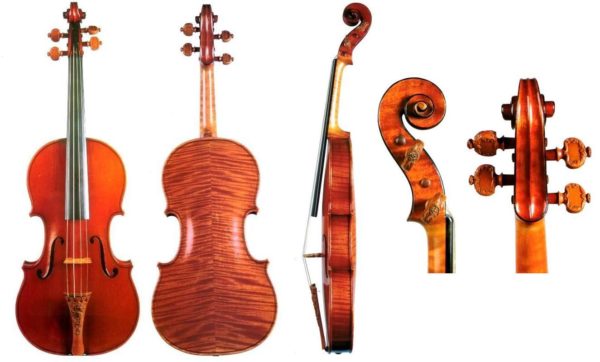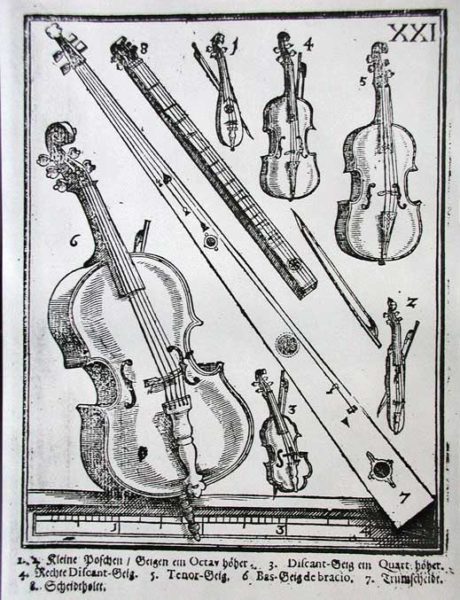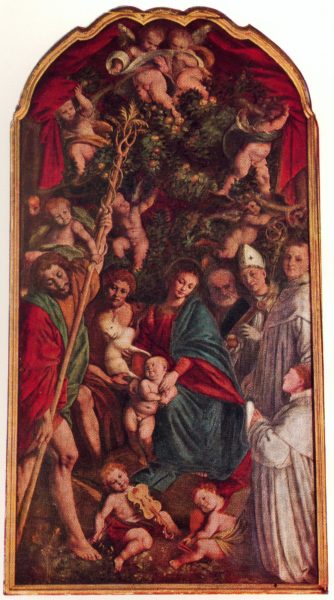
What’s in a NAME?
The word “violin” comes from Italian violino, a diminutive form of viola, which owes its roots to Medieval Latin vitula (“stringed instrument”). This latin word is believed to stem from Vitula, Roman goddess of joy, or from related Latin verb vitulari, “to exult, be joyful.”
And you better believe that Tempesta di Mare is bringing the joy. (Come see!)
Two households, both alike in dignity…
Shakespeare, Romeo & Juliet (1597)
The violin belongs to a family of instruments known as the viola da braccio (“viol for the arm”) which emerged in the 16th-century as a counterpoint to the viola da gamba (“viol for the leg”), all of which were played upright between the legs. The viola da braccio family has since grown to include the violin, viola, cello, and double bass (yes, so much for the upright distinction!).

A Brief HISTORY:
The earliest pictures of violins are seen in northern Italy around 1530, about the same time we begin witnessing the words “violino” and “vyollon”. Renaissance violins of this period were of a wide variety of sizes and typically played together as a consort. Around 1610, Giovanni Paolo Cima wrote the first sonatas for violin, marking the start of its use as a solo instrument. At the time, violins were becoming increasingly consistent in size and overall design. By around 1660, a flourishing time for the baroque period, we have instruments that closely resemble our modern versions.
Over the following 18th and 19th centuries, gradual changes were made to the violin, and very specifically its bow. The main effect of these changes was to amplify the overall sound and projection of the instrument, to improve the instrument’s performance in higher registers, and to enable longer legato phrases—an aesthetic that mirrored that of belcanto opera.
While these changes all sound like improvements, the violin’s varnish and especially the wood continue to improve with age, making the world’s fixed supply of old, well-made violins highly desirable. It takes a very skilled luthier to craft the “voice” of the violin with the right balance of shape, wood, varnish, and graduation (thickness profile) of the top and back. Some of the most prized instruments come from the Stradivari, Guarneri, Guadagnini and Amati families from the 16 – 18th century in northern Italy, and by Jacob Stainer in Austria.

Fun Facts:
- The oldest surviving violin, known as the “Charles IX,” was built by Andrea Amati in 1564
- The violin’s four strings are tuned in perfect fifths
- “Fiddle” is a common nickname for violin.
- One of the oldest paintings we have of a violin is Gaudenzio Ferrari’s “Madonna of the Orange Trees” (1529). Bottom, left of center, is a cherub playing a three-stringed violin.
